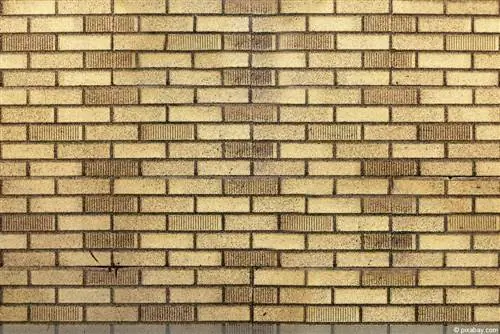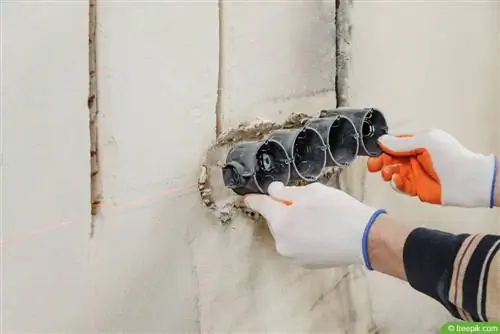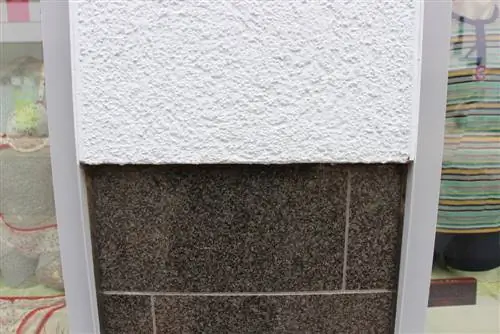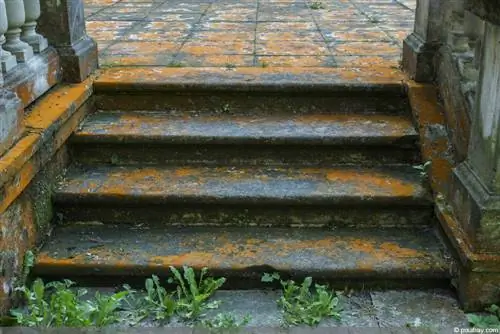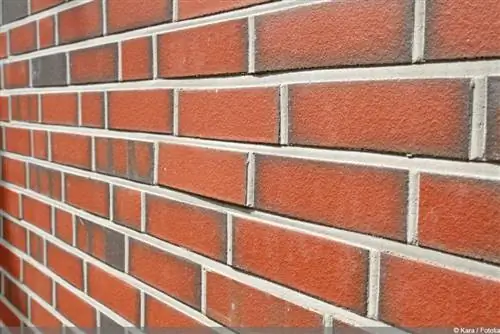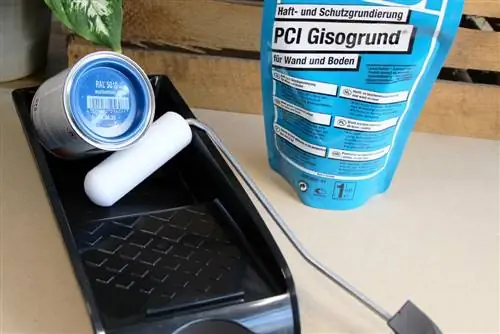- Author admin [email protected].
- Public 2023-12-17 03:39.
- Last modified 2025-06-01 06:48.
Most clinker brick facades appear staid or even a bit stuffy. They offer enormous advantages. They ensure an optimal indoor climate inside the house and never need to be painted. So you save work and costs. However, if you want something a little more modern, cheeky and fresh, you should still use paint or plaster to redesign the facade.
Advantages of clinker brick facades
If they didn't exist yet, they would have to be invented - clinker brick facades. They offer two major advantages. On the one hand, they regulate the indoor climate. The special structure of the clinker bricks ensures that water vapor can escape from the interior to the outside, while at the same time preventing moisture from penetrating. In addition - advantage two - the stones are able to store solar heat and release it into the building. It goes without saying that this way you can save energy. Clinker brick facades therefore not only have a climate-regulating effect, but also an insulating function that should not be underestimated. Anyone who has a clinker brick facade on their house can count themselves lucky.
Note:
Clinker brick facades last practically forever and only need to be cleaned every now and then. It is therefore not necessary to paint them except for aesthetic reasons.
Paint or plaster?
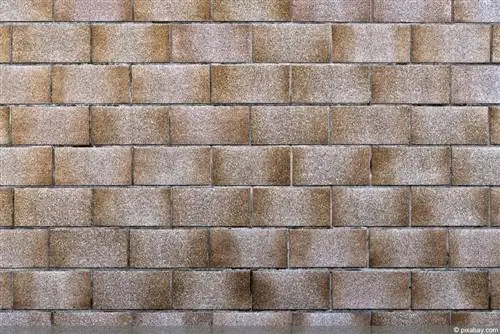
Many older clinker brick facades in particular simply no longer seem contemporary. They come across as very old-fashioned and dusty. Of course you're thinking about a facelift. Of course, the clinker bricks can generally be removed and replaced with a different facade design. But this is an enormously complex undertaking. In comparison, painting the facade or applying plaster is much easier. The former is clearly to be preferred. If plaster is applied, the advantages of clinkering the facade are quickly achieved. With the right paint, however, you can have both - a good climate and a great look.
Tip:
Instead of painting or re-plastering, clinker brick facades can also be improved by planting climbing plants. Ivy and wine are particularly suitable for this.
Tips for painting
If you have decided to paint the brick facade of your house, you should definitely follow a few basic tips to avoid any unpleasant surprises later. If you follow these tips, not only will the painting itself be carried out without any problems, but the positive properties of clinker brick facades will also be retained.
Choose suitable color
If clinker bricks or clinker brick facades are to be painted, this is usually done for visual reasons. However, it's not just the color that matters. Rather, the color chosen must match the design of the entire house. So it's important to carefully weigh up what really fits and what doesn't. For example, the color of the facade can quickly clash with the color of the window frames, shutters or roof eaves. In this context, you should also be warned against too flashy colors and so-called fashionable colors. Both types are usually out again very quickly. The game then starts again.
Note:
You can also mix colors relatively easily in almost any color you want. In this way, an individually tailored design is usually no longer a problem.
Only use silicone resin paints
As already mentioned, the climate-regulating effect of clinker brick facades can be maintained with a coat of paint, as opposed to plastering. However, this can only be achieved if you use the right color type. On the one hand, the paint should be water-repellent, but on the other hand it should also allow water vapor to pass through. Colors based on silicone resin, which can now be found in practically every hardware store, are ideal in this context.
Clean the facade thoroughly
Whatever is to be painted, the surface on which the primer or paint is applied must be clean and, above all, grease-free. This is no different with clinker brick facades. Before you start painting, you need to clean it thoroughly first. The best way to do this is to use a hot water high-pressure cleaner, which can be rented from many hardware stores for a relatively small fee. The cleaner not only ensures a really clean facade, but also saves a lot of effort compared to manual cleaning. After cleaning, the facade must first dry. Only when it is dry can you start painting.
Double primer
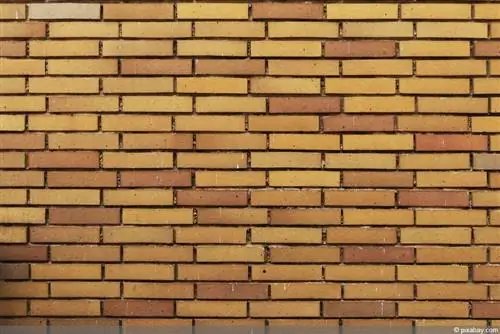
Clinker bricks contain iron oxides that can diffuse through a coat of paint. This would damage the optics and there would then be no question of a uniform color surface. The oxides must therefore be encapsulated as best as possible to prevent diffusion. This is best done with a double coat of primer. This must therefore be applied twice. If possible, it should be pigmented and of course match the chosen color. Priming may only be carried out when the facade and the first coat of primer are dry again.
Paint only when the weather is nice
Painting a facade is much easier than plastering it. If you work carefully and distribute the paint evenly, you can't really go wrong. However, the weather is important. It should definitely be dry and warm. In rainy weather, it's best to keep your hands off the brush or paint roller. Cold can also be a problem as it delays drying. It is therefore best to paint a clinker brick facade in early or mid-summer, even though you will of course sweat more easily and quickly while working.

